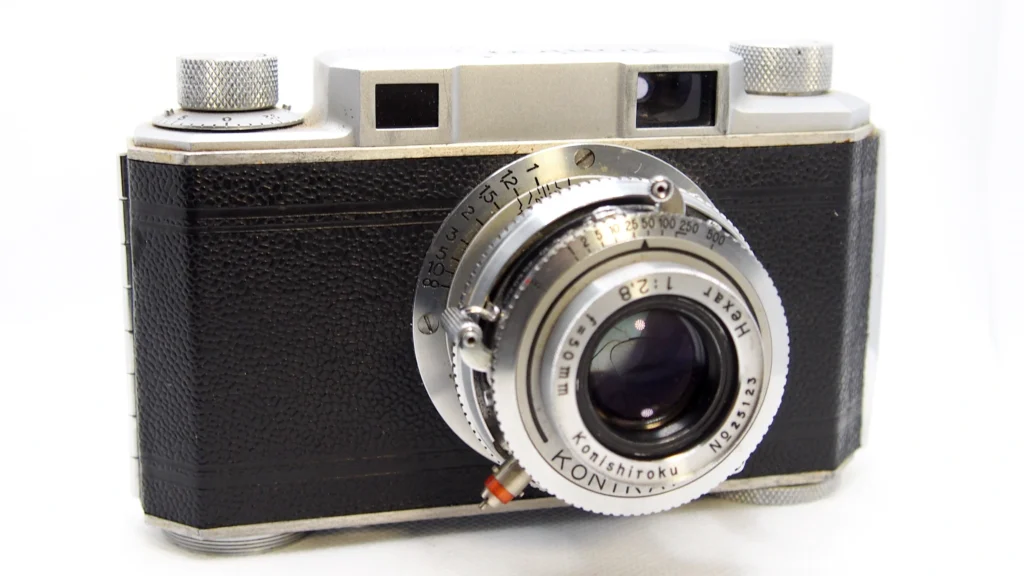
I’m not entirely sure where this camera sits Konica’s photographic timeline, but it’s the first of three 35mm rangefinders that were released in the 1950s.
There’s a lot to like about this camera, despite its modest specifications.
| QUICK INFO | |
| Body, film | Rangefinder, 35mm |
| Shutter | Leaf shutter (six blades) |
| Meter | None |
| Years made | 1950-54 |
| Photo quality | Very good |
| Ergonomics | Somewhat primitive |
There is a bit of disagreement among various sites about the years of production. Most seem to concur with the 1950-54 range, so I’ll go with that.
This is a very basic rangefinder camera and seems very outdated when compared with some of its competitors, such as the Retina III c.
This is the second Konica I that I’ve owned. This one is fitted with the f/2.8 50mm Hexar. The first one that I owned had an f/3.5 lens. While I haven’t shot with this camera, I was very impressed with the f/3.5 version. All Konica I models had a collapsible lens, as far as I know.
This is a stripped-down camera that includes a coupled rangefinder. It’s slightly larger than other cameras but not so large that it becomes an issue. There is some resemblance to a screw-mount Leica, although the Konica has sharper edges and is a larger camera.
This has few frills. The shutter release is at the 9 o’clock position, and you have to tension the shutter by hand. Shutter speeds and apertures are set manually, which you do with many cameras.
Shutter speeds run from one second to 1/500 plus B. If you plan to use the top speed, set the shutter speed ring first before tensioning the shutter. There is no self-timer, but there is a flash synchronization post.
What also makes this and the Konica II and III unusual is that the shutter uses six blades set in a five-blade pattern. One of the blade positions has two shutter blades, and I’ve not yet been able to figure out which it is. Nor have I found a mechanical reason why there are six blades.
Before you advance the film, you must press the large chrome button that is to the right of the viewfinder. To rewind the film, you must press and hold the rewind button on the base of the camera.
There is a large all-chrome dial on the base of the camera. Turn it one way to open the back and turn it the other way to lock the back.
The viewfinder image has a pale purple tone with a pale yellow integrated viewfinder patch. There is good contrast in the viewfinder, which makes it easy to focus.
There are no framelines in the viewfinder, so be a bit loose in composing your shot and get ready to crop the final photo.
You focus the lens by using the lever that sits at the base of the lens. This means that the Hexar is a unit-focusing lens, which in theory is better than a front-cell focusing design.
Overall, it’s a very solid camera (literally) and one that you can use inconspicuously, although someone might inevitably ask, “Is that a Leica?” When you reply that it was made by Konica, don’t be surprised if you get a blank stare, because Konica merged with the Minolta in the early 2000s, and the combined company withdrew from photography several years later.